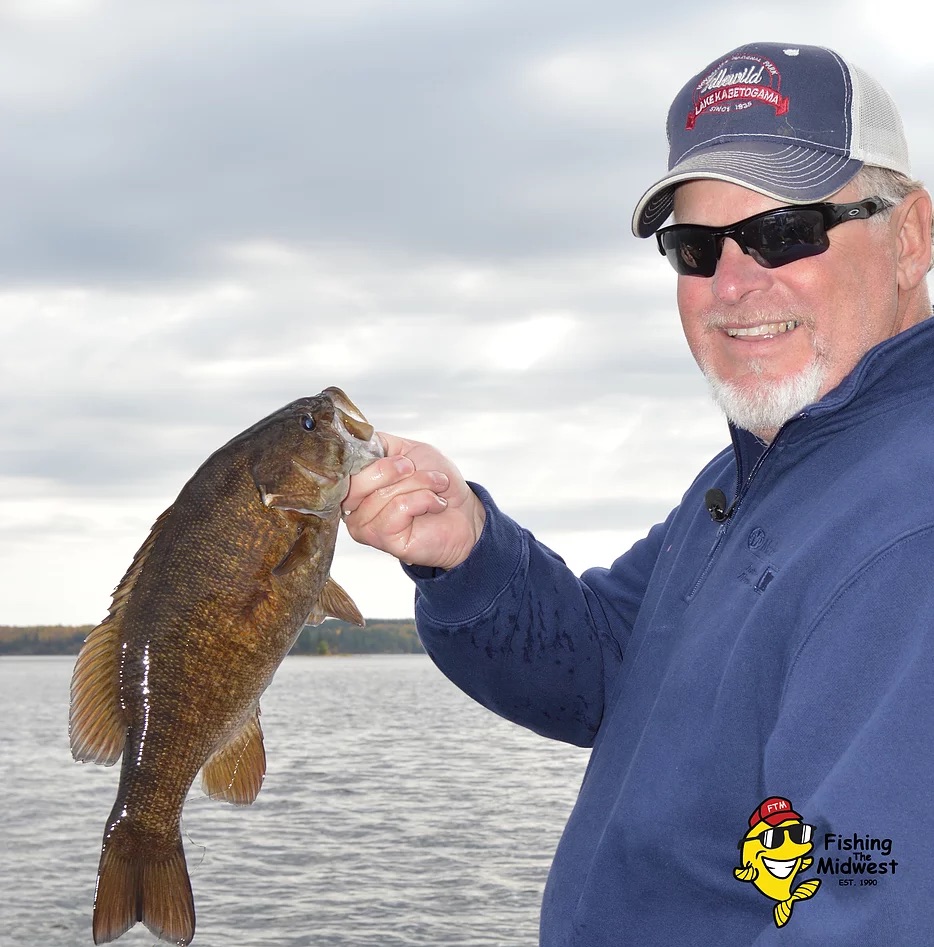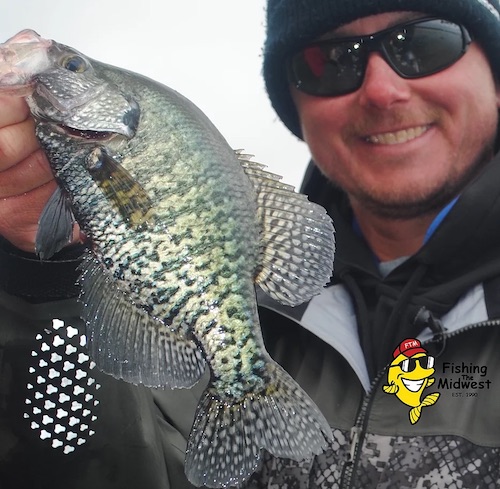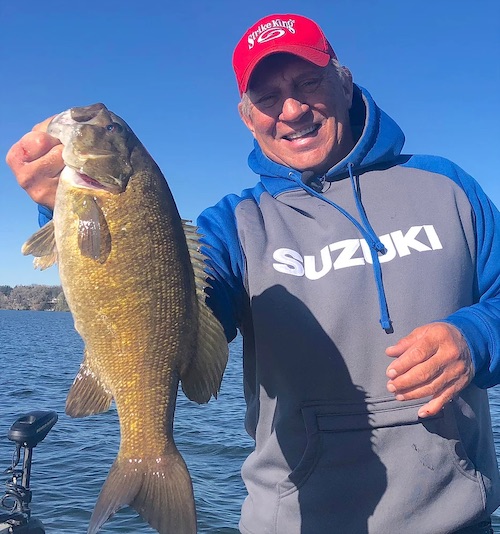News & Stories
The Changing World of Fishing
Posted by admin on February 18, 2019

By Bob Jensen
On a recent or past episode of Fishing the Midwest television depending on where you live, we talked about some of the changes that have taken place in the world of fishing. I’ve been fishing for a little more than 5 decades and have seen many changes. Most of those changes have been for the good, some even great, for those of us who like to go fishing. Following are some of the changes that I’ve seen.
First the changes in equipment, and there have been lots. Perhaps the improvements and advancements in sonar are most noteworthy. When I got my first boat in the early 80’s, a tiller boat with a 50 horsepower motor, it had a flasher by the tiller and a flasher on the bow. That was it, and that’s how many boats were rigged. Some only had a flasher at the tiller. We could see the bottom depth, and by fine-tuning we could determine if the bottom was hard or soft. We could see weeds, and we could see fish for a few seconds.
Today, some anglers have a liquid crystal unit or 2 at the steering wheel and another 1 or 2 on the bow next to the electric motor. These units show what’s currently under the boat and to either side of the boat, and because of the screen size, they show what we went over a ways back. They have mapping that shows where we are on the lake, and where we are on a particular piece of structure. They show water temp, latitude and longitude, and time of day. Truly amazing! The Raymarine units that I use enable an angler to zoom in on a particular area of the water column and they provide unbelievable target separation. They’ve changed the way we go fishing.
Improvements in boats and motors enable us to get to areas that in days gone-by were inaccessible. Back in the day we rarely ran long distances, especially if the weather forecast included much wind. Weather forecasts back then weren’t as accurate as today, our motors weren’t as reliable, and the boats weren’t built for waves like they are now.
The Suzuki motors that I run are so much quieter, fuel-efficient, and more reliable than those motors of yesteryear. Today we can go farther with less fuel and a lot more confidence.
The lakes are changing also, and in most instances for the better. Take Kabetogama Lake in northern Minnesota. I started going there in the early 2000’s, and we had good fishing. We fished exclusively for walleyes, and we caught’em. Mostly small ones, but every now and then we caught a big one. Then a slot limit was put in place, and within 2 or 3 years, we saw lots more big walleyes. We still catch plenty to eat, but the odds of catching a trophy are much better today. Kab is now a world class walleye fishery.
Then a few years ago, crappies became abundant on Kab. We started fishing for them, and we caught lots of’em, including some truly big ones.
And then a couple of years later, we learned about the smallmouth fishery on Kab. Absolutely outstanding: Another world-class fishery.
Sometimes we compare things back to the past, and sometimes our memory gets cloudy. I know mine does. But when it comes to fishing where I and my friends go fishing, right now are the good old days. And, I expect with even more advancements in equipment and fisheries management, the good old days are going to last a long time.
PHOTO #1: Here’s Tim Snyder with a Kabetogama Lake smallmouth bass. Kab has become a world-class fishery for several species of fish.
Spring Trip Planner 2019
Posted by admin on February 17, 2019

PHOTO2– Kevan Paul with a Clear Lake crappie caught a couple springs ago.
By Mike Frisch
As the days get longer and the weather gradually warms, more and more of my thoughts are turning to open-water fishing. Since I live in Minnesota where inland lakes don’t open to walleye fishing until mid-May, I often make several trips each spring to other places where walleyes are fair game. Here are a couple destinations that I am planning to visit that have the potential to produce outstanding catches this spring!
Big Stone Lake, (MN/SD)
At the time of this writing, it appears that Big Stone Lake, on the Minnesota/South Dakota border, will no longer have a closed fishing season as a proposal to eliminate the closed season on Big Stone appeared to be all but final. That means that as soon as the ice leaves the lake, the fishing will start! Depending on the year, open-water on Big Stone can be expected by early- to mid-April.
Early season on Big Stone means hungry pre-spawn walleyes roaming the lake’s expansive rocky shorelines. When I say shorelines, often that means the fish hold right tight to shore! Pitching small jigs tipped with minnows to the edge where water meets rock is often productive. Shallow roaming baitfish are present on these rocks drawing walleyes, and the fish use these areas for spawning as well.
Small 1/16-ounce Fire-Ball Jigs tipped with fathead minnows often yield good catches. The good early season fishing often happens in the northern reaches of this 26-mile long water. The bite progresses south as the water warms. Since there is lots of potentially productive shoreline to fish on Big Stone, staying on the move searching for that first fish is recommended. Once the first bite or two is had, it’s not unusual to slow up and catch several more fish from an area!
Big Stone will be on my fishing menu this spring. If you are considering a trip of your own, check out bigstonelakechamber.comfor more information about this top fishing destination and the surrounding area.
In addition to walleyes, good spring catches of largemouth bass, crappies, and bluegills are also common on Big Stone.
Clear Lake, Iowa
I had a chance to share a boat a few years ago in early May with Bob Jensen, Fishing the Midwest TV founder, and Kevan Paul fishing Clear Lake in north central Iowa. Bob has been fishing Clear Lake since he was a boy and Kevan is a leading guide on the lake.
We found numbers of shallow walleyes of all sizes and had a blast casting small jigs tipped with minnows and leeches to the fish. Since multiple lines are legal, we used additional lines to suspend jigs and bait below bobbers. This method caught several of our fish, including some of the biggest.
Interestingly, some of these fish were so shallow that we flipped our jigs (a la bass fishermen) under docks to reach them. Some of the walleyes were feeding on bugs hatching off the lake’s bottom, so we used small Stand-Up Fire-Balls Jigs. The “stand up” design kept our baits squirming just above bottom providing easy meals for the walleyes.
Clear Lake also has a good crappie population and we spent part of our day in shallow shoreline reeds and cane dipping small jigs in openings within the vegetation for shallow feeding crappies.
I’m hoping for a return trip to Clear Lake in late April or in May. If you decide to plan a similar outing, visit clearlakeiowa.com to learn more about the area.
Mike Frisch hosts the popular Fishing the Midwest TV series and is a co-founder of the Bass Pro Shops and Cabela’s School of Fish. Follow Fishing the Midwest on Facebook to see more from Mike.
A look ahead
Posted by admin on January 18, 2019

By Mike Frisch
At least half of winter is in the rear-view mirror now and that means that open-water is nearing! While some of the year’s best ice fishing is still ahead at late ice, now is also the time I start preparing for open-water.
Tackle Inventory
I average five days a week on the water as an open-water guide. The neat, organized tackle boxes of opening day become a distant memory by summer. While I try to re-organize a bit at the end of every trip, the situation gradually gets worse as the season progresses.
Now is the time to dig out tackle boxes that haven’t been touched from last fall, take inventory of what remains, and make a list of needed tackle. I also reorganize what remains in each box as well and prepare “homes” for those items to be purchased.
This coming season I do anticipate staying more organized with my tackle. Because, I sampled a couple of the new Lure Lock tackle boxes last fall. These storages feature TakLogic Technology which holds lures in a soft, safe place preventing movement, keeping them protected, and keeping their hooks sharp.
My experience last summer convinced me to replace my old tackle storages with these new boxes.
New Tackle
Organizing existing tackle is a good job now. This is also a good time to acquire new tackle. For me, that means stocking up on “old favorites” and ordering new lures that hold promise.
As a TV fishing show host, I am fortunate to occasionally get my hands on new lures before they hit store shelves. Last fall, I sampled a couple “new for 2019” tackle items that earned places in my boat for this season.
The new Baby Z-TOO is a junior-sized version of the popular Z-TOO soft jerkbait. This little bait produced big smallmouth bass on several trips late last season. They’re made from ElazTech giving them tantalizing action and also good durability, often allowing several fish to be caught on one bait.
We also sampled some of the new UV-colored Fire-Ball Jigs on walleye TV shoots last year. On one memorable November trip on the off-colored waters of the Mississippi River, those new colors helped our baits be more visible and put a bunch of nice-sized walleyes in the boat.
Spool New Line
Stocking new lures is a good job now, and so is respooling fishing reels. Starting your season with fresh line will mean better line manageability, and increase your odds for landing that first trophy fish.
Lots of kinds of fishing lines are available. Much of my fishing, however, centers around using braided main line on my reels, with Tactical fluorocarbon leaders added between the braid and lure.
Low-stretch braids offer super sensitivity, while the fluorocarbon leader acts as bit of a shock absorber to help land hard-fighting fish and, is also less visible underwater. I’ll respool with fresh braid now and, because braid is also very durable, use it all season long, only occasionally retying new leaders.
When guiding for walleyes using jigs or rigs I use spinning rod/reel combinations with this line set-up. Those same combinations also do double duty if we switch to jig-worm fishing for bass later in the day. This means less rods/reels needed in the boat.
Late last year, we also started using the new Custom Pro Speed Spin reels and were very impressed. These reels are light, yet strong and feature silky smooth drags that did a great job battling hard-fighting fall smallies and those jig-hooked Mississippi River walleyes too!
If more hooked and landed fish in 2019 is your goal, consider completing the suggested tasks above. Preparing now can, in fact, mean more fishing successes later.
As always good luck on the water and remember to include a youngster in your next outdoors adventure!
Mike Frisch hosts the popular Fishing the Midwest TV series and is a co-founder of the Bass Pro Shops and Cabela’s School of Fish. Follow Fishing the Midwest on Facebook to see more from Mike.
